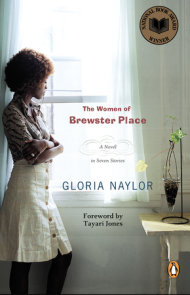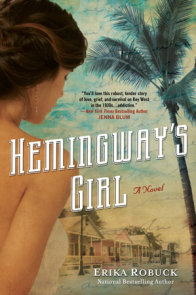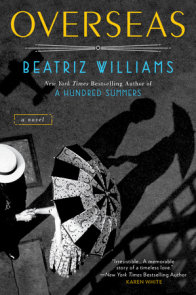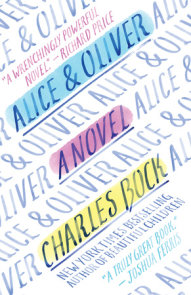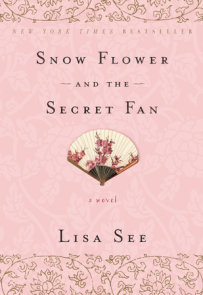READERS GUIDE
Questions and Topics for Discussion
INTRODUCTION
Twenty-two-year-old Charlie Wong grew up in New York’s Chinatown, the older daughter of a Beijing ballerina and a noodle maker. Though an ABC (America-born Chinese), Charlie’s entire world has been limited to this small area. Now grown, she lives in the same tiny apartment with her widower father and her eleven-year-old sister, and works—miserably—as a dishwasher.
But when she lands a job as a receptionist at a ballroom dance studio, Charlie gains access to a world she hardly knew existed, and everything she once took to be certain turns upside down. Gradually, at the dance studio, awkward Charlie’s natural talents begin to emerge. With them, her perspective, expectations, and sense of self are transformed—something she must take great pains to hide from her father and his suspicion of all things Western. As Charlie blossoms, though, her sister becomes chronically ill. As Pa insists on treating his ailing child exclusively with Eastern practices to no avail, Charlie is forced to try to reconcile her two selves and her two worlds—Eastern and Western, old world and new—to rescue her little sister without sacrificing her newfound confidence and identity.
ABOUT JEAN KWOK
Jean Kwok is the author of Girl in Translation. She was born in Hong Kong and immigrated to Brooklyn as a young girl.
DISCUSSION QUESTIONS
- In popular culture, Asian-American immigrants are often depicted as being high achieving, both scholastically and professionally. In reality, though, more than 50 percent of Asian-Americans are employed in blue-collar and service industries, the majority of which are low-wage positions. How does Charlie challenge the myth of Asian-American success that is often portrayed in the media? In what ways is Charlie’s story universal? Find other examples in the book that challenge American stereotypes of Asian culture.
- The characters in Mambo in Chinatown include a dishwasher, a noodle-maker, and an egg-cakes cart girl, among others. Why do you think the author chose to focus on the dreams of these people, characters who would otherwise be invisible to the average person? How has reading Mambo in Chinatown affected your views of immigrants and working class people?
- Lisa and Charlie each fulfill different roles in their family, though these roles begin to come into conflict as both sisters change over the course of the novel. The author portrays the complicated mix of love, guilt, and jealousy between the two sisters. Think about your own role in your family. Were you always happy with it? How did you respond to the pressures within your household?
- Charlie’s two love interests represent two different choices for her. How is Charlie different with each man? What does her ultimate choice say about what Charlie values?
- The characters in Mambo in Chinatown turn to both Eastern and Western medicine. Do you think the author has a preference for one type of medicine over the other? How does Eastern medicine complement Western ? What can we learn from embracing the practices of different cultures when it comes to our own health?
- The book implies that Charlie’s struggles in school can be traced, at least in part, to undiagnosed dyslexia. Do you think the school system failed Charlie? Do you think her learning disability would have been diagnosed earlier if the circumstances of her life had been different? If so, do you think it would have altered her education, her confidence, and the course her life ultimately takes? Compare Charlie’s experience to that of her friends Zan and Mo Li. Why do you think the author chose to include them in the book? How do their stories reflect the Asian-American experience?
- Mambo in Chinatown contrasts Charlie’s drab life in Chinatown to the glamorous world she’s exposed to when she begins working at the ballroom dance studio. How is Charlie altered as she moves between these two spaces? What does Charlie retain from her Chinatown upbringing when she is at the studio? What does she bring back home with her from the world of ballroom dance?
- One of the major themes of the book is the relationship between the body and the soul, and the fight for control over your own body and sexuality. How does this manifest itself in Lisa’s illness? Were you surprised by the ending? Find other threads in the book that mirror these themes—such as the experiences of Charlie, Simone, Nina, and Grace.
- In many ways, Pa, Charlie, and Lisa are all living in different worlds, even though they share the same physical space. How are they different and yet alike? How does this affect their relationship to each other? To what extent are Pa and Charlie responsible for what happens to Lisa? What do you think they could or should have done differently?
- Charlie keeps so many secrets from Pa— about her love life, her dancing, her dreams. What does this do to their relationship? Have you ever kept secrets from someone you loved? Why? Are secrets sometimes necessary?
- Charlie says, “Some people dreamed of going somewhere else; I dreamed of being someone else.” Over the course of the novel, she finds her own talents and dreams. How did her transformation affect you? Do you try to achieve your dreams, the way Lisa and Charlie put money in their Broadway Show jar? What are your own seemingly “impossible” dreams?











